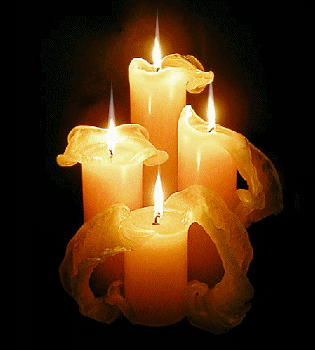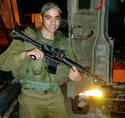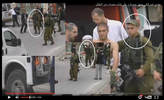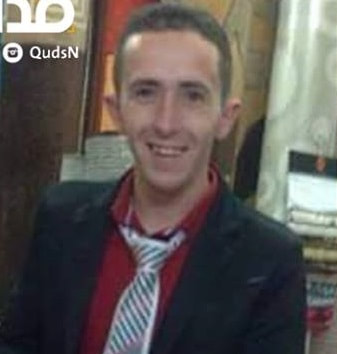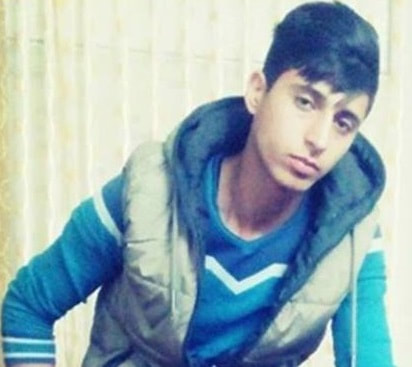16 june 2016
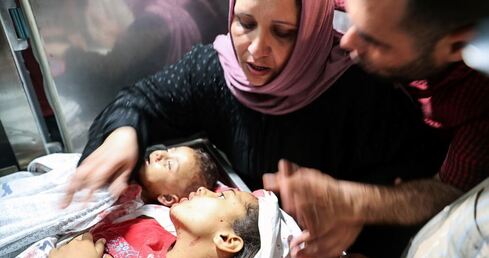
Major Tom Na'aman, Elor Azaria's company commander
Maj. Tom Na'aman says no justification for Elor Azaria to shoot dead neutralized terrorist, saying the terrorist 'didn't pose a threat' and that no one else on the scene that day made claims to this effect.
Sgt. Elor Azaria, who is on trial after shooting dead a neutralized attacker, told his company commander that the terrorist "needed to die," the commander told the court on Thursday.
"I asked who fired their weapon," Maj. Tom Na'aman testified. "I didn't think it was one of my soldiers. I saw Elor walking with his rifle and asked him who gave him permission to fire and asked why he did it. He told me 'the terrorist was alive, and he needed to die.'"
In late March, two Palestinian terrorists armed with knives stabbed a soldier at an IDF post near the Tel Rumeida neighborhood in Hebron, moderately wounding him. The two were shot and neutralized by soldiers from the IDF's Kfir Brigade. A video filmed several minutes later by B'Tselem volunteer Emad abu-Shamsiyah shows one of the terrorists, Abed al Fatah a-Sharif, lying on the ground motionless, when an IDF soldier, Azaria, aims his weapon at him and shoots him in the head.
A pathologist testifying earlier in the day determined that a-Sharif was alive when Azaria's bullet hit his head.
"Bleeding in the brain suggests that the heart of the deceased was still beating when the bullet hit his head, since blood was still flowing to that zone," said Dr. Hadas Gips of the Abu Kabir Forensic Institute.
According to Company Commander Maj. Tom Na'aman, after the terrorist was first neutralized, he went over to the body. "I stood over him and looked at him and didn't feel that he posed a threat. His eyes were shut and appeared to have rolled into the back of his head. There was some movement of his head from side to side, but he didn't pose a threat," he said.
He also noted that "No one had called my attention to the fact there was a terrorist who posed a danger. There was no claim to this effect. I had no suspicions (the terrorist had) a bomb or a suicide belt."
"In our briefings, we talk about the dangers posed by shootings or by stabbings. There was no justification for Elor to discharge his weapon," Na'aman asserted.
Defense attorney Ilan Katz asked the company commander: "What was your understanding when Elor said 'he needs to die?' Was it for revenge?"
The company commander replied "I don’t know if it was revenge, but what I understood this to mean was 'this is the terrorist who wounded my friend – therefore he needs to die.' He didn't say anything about any danger."
Describing how the incident began, the officer testified that "there was screaming in the neighborhood, so I ran to the location with the understanding that an attack had occurred. I saw a soldier sitting on the sidewalk and the division commander was holding a bandage to the soldier's shoulder."
"There was blood in the area, and one of the terrorists was lying next to them with a severe wound to his neck ... Ten seconds after I arrived to the location, Elor came (from the military post) and I told him to take care of the wounded soldier."
Na'aman then received an update from the division commander and was told that four or five bullets had been fired at the first terrorist, wearing a gray shirt, and three additional bullets were fired at the second terrorist, Abed al Fatah a-Sharif, who Azaria later shot as well.
"I knew at that moment that the terrorist in the gray shirt was dead, but I wasn't sure about the second one. The division commander told me that (the second terrorist) was also dead," Na'aman continued.
Maj. Tom Na'aman says no justification for Elor Azaria to shoot dead neutralized terrorist, saying the terrorist 'didn't pose a threat' and that no one else on the scene that day made claims to this effect.
Sgt. Elor Azaria, who is on trial after shooting dead a neutralized attacker, told his company commander that the terrorist "needed to die," the commander told the court on Thursday.
"I asked who fired their weapon," Maj. Tom Na'aman testified. "I didn't think it was one of my soldiers. I saw Elor walking with his rifle and asked him who gave him permission to fire and asked why he did it. He told me 'the terrorist was alive, and he needed to die.'"
In late March, two Palestinian terrorists armed with knives stabbed a soldier at an IDF post near the Tel Rumeida neighborhood in Hebron, moderately wounding him. The two were shot and neutralized by soldiers from the IDF's Kfir Brigade. A video filmed several minutes later by B'Tselem volunteer Emad abu-Shamsiyah shows one of the terrorists, Abed al Fatah a-Sharif, lying on the ground motionless, when an IDF soldier, Azaria, aims his weapon at him and shoots him in the head.
A pathologist testifying earlier in the day determined that a-Sharif was alive when Azaria's bullet hit his head.
"Bleeding in the brain suggests that the heart of the deceased was still beating when the bullet hit his head, since blood was still flowing to that zone," said Dr. Hadas Gips of the Abu Kabir Forensic Institute.
According to Company Commander Maj. Tom Na'aman, after the terrorist was first neutralized, he went over to the body. "I stood over him and looked at him and didn't feel that he posed a threat. His eyes were shut and appeared to have rolled into the back of his head. There was some movement of his head from side to side, but he didn't pose a threat," he said.
He also noted that "No one had called my attention to the fact there was a terrorist who posed a danger. There was no claim to this effect. I had no suspicions (the terrorist had) a bomb or a suicide belt."
"In our briefings, we talk about the dangers posed by shootings or by stabbings. There was no justification for Elor to discharge his weapon," Na'aman asserted.
Defense attorney Ilan Katz asked the company commander: "What was your understanding when Elor said 'he needs to die?' Was it for revenge?"
The company commander replied "I don’t know if it was revenge, but what I understood this to mean was 'this is the terrorist who wounded my friend – therefore he needs to die.' He didn't say anything about any danger."
Describing how the incident began, the officer testified that "there was screaming in the neighborhood, so I ran to the location with the understanding that an attack had occurred. I saw a soldier sitting on the sidewalk and the division commander was holding a bandage to the soldier's shoulder."
"There was blood in the area, and one of the terrorists was lying next to them with a severe wound to his neck ... Ten seconds after I arrived to the location, Elor came (from the military post) and I told him to take care of the wounded soldier."
Na'aman then received an update from the division commander and was told that four or five bullets had been fired at the first terrorist, wearing a gray shirt, and three additional bullets were fired at the second terrorist, Abed al Fatah a-Sharif, who Azaria later shot as well.
"I knew at that moment that the terrorist in the gray shirt was dead, but I wasn't sure about the second one. The division commander told me that (the second terrorist) was also dead," Na'aman continued.
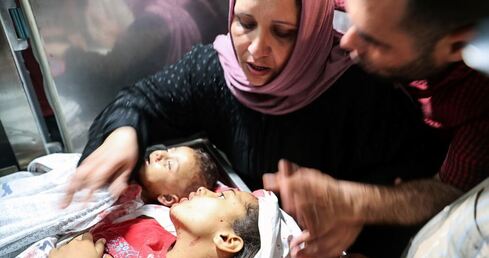
Dr. Hadas Grips stated that 'bleeding in brain suggests that the heart of deceased was still beating when the fatal bullet hit his head.'
A pathologist from the Abu Kabir Forensic Institute, testified Thursday at Jaffa military court that the neutralized terrorist that Sgt. Elor Azaria shot last March, was alive when the fatal bullet hit his head.
"Bleeding in the brain suggests that the heart of the deceased was still beating when the bullet hit his head, since blood was still flowing to that zone," Dr. Hadas Gips said.
Asked what the pathological findings reveal regarding the rest of the terrorist's wounds prior to Azaria's shooting, Gips replied, "The other wounds found on his body were not immediately fatal and if he had received appropriate medical treatment he would still be alive. Even without receiving medical attention he would most likely still be alive."
Asked by the defense team about the potential consequences of the shootings which preceded Azaria's intervention, Gips noted: "Regarding the number of shooters I have no way of knowing, and it depends on the examination of shells in other laboratories. If it is a matter of a second or two between shots – it is not possible to determine their order. Even after a shooting to the head which paralyzes the brain centers, the heart continues to beat sporadically. So if the deceased was shot in the head beforehand in the head, I would not find the bleeding in other parts of the body that are not in the brain. Therefore the shot to the head was the last shot."
In response to the question of whether there could be movement in the limbs after brain's failure to function, Gips replied, "if the defense is asking whether the deceased was alive and the rest of the body was functioning then there could be small muscle cramps but I have reservations about this and this is the domain of neurosurgeons more familiar with this issue than I am."
Last week the court heard the testimonies of the Palestinian cameramen who documented the incident for left-wing NGO B'Tselem.
Among those providing testimony was Imad Abu Shamsiyah, who claimed that he did not edit the controversial video.
Azaria’s defense team has cast doubts in recent months regarding the credibility of the controversial videos and has suggested that they may have been "cooked up during editing."
The conclusions of an expert from the DIFS (Division of Identification and Forensic Science), which will consist of dozens of pages, will be brought before the military court on Wednesday. Its conclusions are expected to be that B’Tselem’s videos are authentic since they were forwarded to the Criminal Investigation Division (CID) Military Police the morning of the incident, with the original memory card of the camera that documented the incident.
A pathologist from the Abu Kabir Forensic Institute, testified Thursday at Jaffa military court that the neutralized terrorist that Sgt. Elor Azaria shot last March, was alive when the fatal bullet hit his head.
"Bleeding in the brain suggests that the heart of the deceased was still beating when the bullet hit his head, since blood was still flowing to that zone," Dr. Hadas Gips said.
Asked what the pathological findings reveal regarding the rest of the terrorist's wounds prior to Azaria's shooting, Gips replied, "The other wounds found on his body were not immediately fatal and if he had received appropriate medical treatment he would still be alive. Even without receiving medical attention he would most likely still be alive."
Asked by the defense team about the potential consequences of the shootings which preceded Azaria's intervention, Gips noted: "Regarding the number of shooters I have no way of knowing, and it depends on the examination of shells in other laboratories. If it is a matter of a second or two between shots – it is not possible to determine their order. Even after a shooting to the head which paralyzes the brain centers, the heart continues to beat sporadically. So if the deceased was shot in the head beforehand in the head, I would not find the bleeding in other parts of the body that are not in the brain. Therefore the shot to the head was the last shot."
In response to the question of whether there could be movement in the limbs after brain's failure to function, Gips replied, "if the defense is asking whether the deceased was alive and the rest of the body was functioning then there could be small muscle cramps but I have reservations about this and this is the domain of neurosurgeons more familiar with this issue than I am."
Last week the court heard the testimonies of the Palestinian cameramen who documented the incident for left-wing NGO B'Tselem.
Among those providing testimony was Imad Abu Shamsiyah, who claimed that he did not edit the controversial video.
Azaria’s defense team has cast doubts in recent months regarding the credibility of the controversial videos and has suggested that they may have been "cooked up during editing."
The conclusions of an expert from the DIFS (Division of Identification and Forensic Science), which will consist of dozens of pages, will be brought before the military court on Wednesday. Its conclusions are expected to be that B’Tselem’s videos are authentic since they were forwarded to the Criminal Investigation Division (CID) Military Police the morning of the incident, with the original memory card of the camera that documented the incident.
7 june 2016
As the army removed the closure, a B’Tselem employee was able to interview the two eyewitnesses who are claiming al-Qasrawi was executed.
The Tel Rumeida neighborhood is under surveillance by security cameras, meaning this accusation could be easy to prove or disprove.
B’Tselem made clear to the witnesses that the Israeli army probably had footage of the entire incident on it security cameras located in the area, and that this footage could corroborate or disprove their accounts.
Both witnesses repeated their testimony and said they were ready to testify before any official body if summoned.
Israeli human rights organization says evidence of second execution in March incident
The Israeli Information Center on Human Rights in the Occupied Territories, B’Tselem, issued a press release Monday stating that a second Palestinian was executed in Hebron on March 24th, in addition to Abdul-Fattah Sharif.
Sharif’s case made international headlines because video of his execution, while he was lying wounded on the ground, was captured by a local resident and B’Tselem volunteer. The video was released publicly by B’Tselem, which led to charges being filed against the Israeli soldier who fired the fatal shot.
The release of the video also led to harassment, interrogation and death threats against the Palestinian who filmed it.
Now, two more Palestinian residents of the neighborhood have come forward with their own video footage and testimony that the second Palestinian killed by Israeli troops in Hebron on March 24th, Ramzi al-Qasrawi, was also executed.
The press release from B’Tselem follows, along with portions of the newly-released videos:
Testimonies: Prior to incident for which Elor Azaria is facing charges, Ramzi al-Qasrawi was also executed
On 24 March 2016, ‘Abd al-Fatah a-Sharif and Ramzi al-Qasrawi were killed by soldiers’ gunfire in the Tel Rumeida neighborhood in Hebron. They were shot after they stabbed a soldier who, according to media reports, sustained light injuries. The incident was widely covered by the media thanks to video footage shot by B’Tselem volunteer ‘Imad Abu Shamsiyeh, in which a soldier can be seen executing the injured a-Sharif, shooting him in the head. The shooter, Elor Azaria, is currently on trial for manslaughter for his actions.
The footage of the incident that B’Tselem released in March began at a point in time in which the second assailant, Ramzi al-Qasrawi was already dead. The military has recently lifted the strict travel restrictions imposed on Tel Rumeida, so for the first time since the incident, B’Tselem field researcher Manal al-Ja’bri was able to get into the neighborhood and collect testimonies from its residents. The testimonies of two of residents, Nur Abu ‘Eishah and Amani Abu ‘Eishah, raise concerns that al-Qasrawi was also executed with a shot to the head, as he lay injured on the ground after having been hit by gunfire elsewhere in his body.
The two stated that, on the day of the incident, they began following events after they heard gunshots from the street. They said that after both a-Sharif and al-Qasrawi were lying injured on the road, clearly posing no danger to anyone, and even before additional troops and the paramedics arrived on the scene, a soldier (or officer) went up to al-Qasrawi and shot him twice in the neck or head from several meters away. Later on in this incident, both saw Azaria shooting a-Sharif in the head, an action that was captured on ‘Imad Abu Shamsiyeh’s camera.
The two eyewitnesses, both B’Tselem volunteers, documented parts of the incident with their cameras, but not the moment al-Qasrawi was shot. They both circulated the footage on social media immediately after the incident, and Nur Abu ‘Eishah was even interviewed shortly thereafter in the Palestinian press. Given how long it’s been since the incident and the gravity of the allegations, B’Tselem made clear to Nur Abu ‘Eishah and Amani Abu ‘Eishah that the military probably had footage of the entire incident on it security cameras located in the area, and that this footage could corroborate or disprove their accounts. Both witnesses repeated their testimony and said they were prepared to testify before any official body if summoned.
Since the most recent wave of violence began in October 2015, a good number of instances were caught on video showing executions of Palestinians who stabbed or were suspected of stabbing Israeli security personnel or civilians. (For more on this subject see B’Tselem’s report of December 2015). In other cases, executions were alleged, but since there was no video footage, B’Tselem was unable to confirm the allegations. Many of these cases were captured on the military’s security cameras which are permanently installed in various locations throughout the West Bank, such as checkpoints or downtown Hebron. B’Tselem has no access to this footage, but it is available to the military, which for the most part takes pains not to make it public.
This material is also available to the military’s investigating authorities, which as a rule choose to ignore it. There have been many reports since October of a policy permitting shoot-to-kill in incidents in which Palestinians harmed, or attempted to harm, Israeli security personnel or civilians, even when there is no clear and immediate mortal danger or if the danger can be overcome without resorting to a lethal outcome. Nevertheless, to date, these cases are hardly ever investigated, and no civilian or member of the security forces has faced charged for implementing his policy. The case of Sgt. Azaria, whose trial is still underway, is the one exception. But what is far more grave is that this open-fire policy has the full backing of senior civil and military officials. Israeli law enforcement authorities, both military and civilian, prefer not to deal with these cases, instead, shutting their eyes to this reality, thereby granting it legitimacy and enabling it to carry on.
The Tel Rumeida neighborhood is under surveillance by security cameras, meaning this accusation could be easy to prove or disprove.
B’Tselem made clear to the witnesses that the Israeli army probably had footage of the entire incident on it security cameras located in the area, and that this footage could corroborate or disprove their accounts.
Both witnesses repeated their testimony and said they were ready to testify before any official body if summoned.
Israeli human rights organization says evidence of second execution in March incident
The Israeli Information Center on Human Rights in the Occupied Territories, B’Tselem, issued a press release Monday stating that a second Palestinian was executed in Hebron on March 24th, in addition to Abdul-Fattah Sharif.
Sharif’s case made international headlines because video of his execution, while he was lying wounded on the ground, was captured by a local resident and B’Tselem volunteer. The video was released publicly by B’Tselem, which led to charges being filed against the Israeli soldier who fired the fatal shot.
The release of the video also led to harassment, interrogation and death threats against the Palestinian who filmed it.
Now, two more Palestinian residents of the neighborhood have come forward with their own video footage and testimony that the second Palestinian killed by Israeli troops in Hebron on March 24th, Ramzi al-Qasrawi, was also executed.
The press release from B’Tselem follows, along with portions of the newly-released videos:
Testimonies: Prior to incident for which Elor Azaria is facing charges, Ramzi al-Qasrawi was also executed
On 24 March 2016, ‘Abd al-Fatah a-Sharif and Ramzi al-Qasrawi were killed by soldiers’ gunfire in the Tel Rumeida neighborhood in Hebron. They were shot after they stabbed a soldier who, according to media reports, sustained light injuries. The incident was widely covered by the media thanks to video footage shot by B’Tselem volunteer ‘Imad Abu Shamsiyeh, in which a soldier can be seen executing the injured a-Sharif, shooting him in the head. The shooter, Elor Azaria, is currently on trial for manslaughter for his actions.
The footage of the incident that B’Tselem released in March began at a point in time in which the second assailant, Ramzi al-Qasrawi was already dead. The military has recently lifted the strict travel restrictions imposed on Tel Rumeida, so for the first time since the incident, B’Tselem field researcher Manal al-Ja’bri was able to get into the neighborhood and collect testimonies from its residents. The testimonies of two of residents, Nur Abu ‘Eishah and Amani Abu ‘Eishah, raise concerns that al-Qasrawi was also executed with a shot to the head, as he lay injured on the ground after having been hit by gunfire elsewhere in his body.
The two stated that, on the day of the incident, they began following events after they heard gunshots from the street. They said that after both a-Sharif and al-Qasrawi were lying injured on the road, clearly posing no danger to anyone, and even before additional troops and the paramedics arrived on the scene, a soldier (or officer) went up to al-Qasrawi and shot him twice in the neck or head from several meters away. Later on in this incident, both saw Azaria shooting a-Sharif in the head, an action that was captured on ‘Imad Abu Shamsiyeh’s camera.
The two eyewitnesses, both B’Tselem volunteers, documented parts of the incident with their cameras, but not the moment al-Qasrawi was shot. They both circulated the footage on social media immediately after the incident, and Nur Abu ‘Eishah was even interviewed shortly thereafter in the Palestinian press. Given how long it’s been since the incident and the gravity of the allegations, B’Tselem made clear to Nur Abu ‘Eishah and Amani Abu ‘Eishah that the military probably had footage of the entire incident on it security cameras located in the area, and that this footage could corroborate or disprove their accounts. Both witnesses repeated their testimony and said they were prepared to testify before any official body if summoned.
Since the most recent wave of violence began in October 2015, a good number of instances were caught on video showing executions of Palestinians who stabbed or were suspected of stabbing Israeli security personnel or civilians. (For more on this subject see B’Tselem’s report of December 2015). In other cases, executions were alleged, but since there was no video footage, B’Tselem was unable to confirm the allegations. Many of these cases were captured on the military’s security cameras which are permanently installed in various locations throughout the West Bank, such as checkpoints or downtown Hebron. B’Tselem has no access to this footage, but it is available to the military, which for the most part takes pains not to make it public.
This material is also available to the military’s investigating authorities, which as a rule choose to ignore it. There have been many reports since October of a policy permitting shoot-to-kill in incidents in which Palestinians harmed, or attempted to harm, Israeli security personnel or civilians, even when there is no clear and immediate mortal danger or if the danger can be overcome without resorting to a lethal outcome. Nevertheless, to date, these cases are hardly ever investigated, and no civilian or member of the security forces has faced charged for implementing his policy. The case of Sgt. Azaria, whose trial is still underway, is the one exception. But what is far more grave is that this open-fire policy has the full backing of senior civil and military officials. Israeli law enforcement authorities, both military and civilian, prefer not to deal with these cases, instead, shutting their eyes to this reality, thereby granting it legitimacy and enabling it to carry on.
6 june 2016
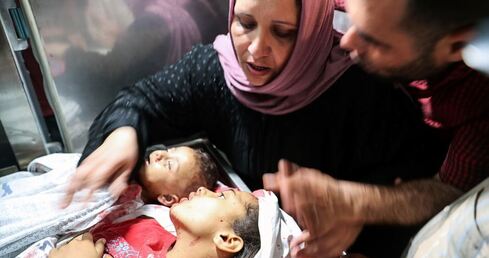
Human Rights Watch (HRW) has called on the International Criminal Court (ICC) to open a formal investigation into serious crimes committed against Palestinians, by the state of Israel, over the past decades.
HRW said in a statement, Sunday, that ICC prosecutor Fatou Bensouda should carry out a formal probe consistent with the ICC’s Rome Statute.
According to Press TV/Al Ray, the ICC has “shed light on the grave nature of many of the crimes and the pervasive climate of impunity for such offenses,” the organization said, making the appeal on the anniversary of an Israeli war on Gaza in 2014.
“After nearly a half century of impunity, it’s time that those responsible for some of the gravest crimes pay the price,” said Sarah Leah Whitson, executive director of Human Rights Watch’s Middle East and North Africa Division.
“The ICC prosecutor should move forward and investigate the crimes so that the victims can obtain a measure of justice that has long eluded them.”
Human Rights Watch, the UN and local and international human rights organizations have already said Israel’s latest war on the besieged Gaza Strip amounts to apparent war crimes.
Israel launched its 50-day onslaught on Gaza in early July 2014. The military aggression, which ended on August 26, killed nearly 2,200 Palestinians, including over 570 children.
HRW said in a statement, Sunday, that ICC prosecutor Fatou Bensouda should carry out a formal probe consistent with the ICC’s Rome Statute.
According to Press TV/Al Ray, the ICC has “shed light on the grave nature of many of the crimes and the pervasive climate of impunity for such offenses,” the organization said, making the appeal on the anniversary of an Israeli war on Gaza in 2014.
“After nearly a half century of impunity, it’s time that those responsible for some of the gravest crimes pay the price,” said Sarah Leah Whitson, executive director of Human Rights Watch’s Middle East and North Africa Division.
“The ICC prosecutor should move forward and investigate the crimes so that the victims can obtain a measure of justice that has long eluded them.”
Human Rights Watch, the UN and local and international human rights organizations have already said Israel’s latest war on the besieged Gaza Strip amounts to apparent war crimes.
Israel launched its 50-day onslaught on Gaza in early July 2014. The military aggression, which ended on August 26, killed nearly 2,200 Palestinians, including over 570 children.
1 june 2016
|
|
A video clip showing an Israeli man putting a knife beside the body of the Palestinian martyr Abdul Fattah al-Sharif, who was killed by Israeli soldiers last March in al-Khalil, was published by the Israeli newspaper Yedioth Ahronoth on Wednesday.
The Israeli military prosecution presented evidences that proved by photos that Israeli soldiers shot the Palestinian dead and that the Palestinian victim had not attacked any of the soldiers. And, an Israeli medic put a knife at the body of the martyr after he was killed. The Israeli attorney general pointed out that there are photos which documented the location of the knife before and after the shooting had |
taken place which proved that the knife was very far from the hand of the martyr.
The lawyer of the accused soldier presented a text message sent to his father one minute after the incident saying that “We had a terror attack, my brother and another man were injured and I killed the terrorist”.
A video clip of B'Tselem organization demonstrated the Israeli soldier as being far from the martyr’s body when the knife was on the ground.
An officer in the military police said in the court hearing that "The B'Tselem’s videos and other documents we received show that the “terrorist” could not reach the knife”.
Footage from Hebron shooting case indicate knife may have been moved closer to dead terrorist's body
The prosecution in the case involving IDF soldier Elor Azaria has presented the court with video footage it claims shows the terrorist's knife being moved closer to his body after the incident in which Azaria shot him.
New footage released Wednesday from the scene of the Hebron incident in which IDF infantryman Elor Azaria shot and killed a neutralized terrorist allegedly shows the attacker's knife being moved closer to his body in the aftermath.
In video, the knife can be seen to be moved slightly by an ambulance going by (whose tire runs over the knife), and then being kicked over closer to the dead terrorist's body by a person whose face is not seen.
Azaria has claimed that he shot the terrorist because he feared that he would use the knife. Prosecutor Lieutenant Colonel Nadav Weisman said that "there is a claim that states the terrorist moved his hand towards a knife near his hand, but we will show that this claim is a false claim."
He continued, stating that "there is a very clear documentation of the knife's location before the shooting and after the shooting and it is far from the terrorist's hand. The defendant's only answer is that he doesn not believe the B'Tselem video, and that the knife was documented by others as well, and we will show this to the court."
Azaria's attorney said in response to the prosecution's indictment that the defendant "acted to neutralize the terrorist and prevent harm to himself and (his fellow soldiers), who were standing near the terrorist, in a fraction of a second. He saw no other possible way to save his life and theirs. The defendant admits that in the act of shooting he may have caused the death of the terrorist, but he certainly neutralized him.
The defendant had in mind a situation in which, in light of the circumstances, the terrorist was (wearing) an explosive vest and (carrying) a knife (while perpetrating) a combined attack, and his movements were meant to set off a vest on his person, thus creating a 'quality' attack…The defendant thought there was a substantial and immediate danger to himself and his friends."
Last Saturday, the funeral of the terrorist, Abed al Fatah Al-Sharif, took place in Hebron. It was attended by many people, some of whom called for revenge.
The lawyer of the accused soldier presented a text message sent to his father one minute after the incident saying that “We had a terror attack, my brother and another man were injured and I killed the terrorist”.
A video clip of B'Tselem organization demonstrated the Israeli soldier as being far from the martyr’s body when the knife was on the ground.
An officer in the military police said in the court hearing that "The B'Tselem’s videos and other documents we received show that the “terrorist” could not reach the knife”.
Footage from Hebron shooting case indicate knife may have been moved closer to dead terrorist's body
The prosecution in the case involving IDF soldier Elor Azaria has presented the court with video footage it claims shows the terrorist's knife being moved closer to his body after the incident in which Azaria shot him.
New footage released Wednesday from the scene of the Hebron incident in which IDF infantryman Elor Azaria shot and killed a neutralized terrorist allegedly shows the attacker's knife being moved closer to his body in the aftermath.
In video, the knife can be seen to be moved slightly by an ambulance going by (whose tire runs over the knife), and then being kicked over closer to the dead terrorist's body by a person whose face is not seen.
Azaria has claimed that he shot the terrorist because he feared that he would use the knife. Prosecutor Lieutenant Colonel Nadav Weisman said that "there is a claim that states the terrorist moved his hand towards a knife near his hand, but we will show that this claim is a false claim."
He continued, stating that "there is a very clear documentation of the knife's location before the shooting and after the shooting and it is far from the terrorist's hand. The defendant's only answer is that he doesn not believe the B'Tselem video, and that the knife was documented by others as well, and we will show this to the court."
Azaria's attorney said in response to the prosecution's indictment that the defendant "acted to neutralize the terrorist and prevent harm to himself and (his fellow soldiers), who were standing near the terrorist, in a fraction of a second. He saw no other possible way to save his life and theirs. The defendant admits that in the act of shooting he may have caused the death of the terrorist, but he certainly neutralized him.
The defendant had in mind a situation in which, in light of the circumstances, the terrorist was (wearing) an explosive vest and (carrying) a knife (while perpetrating) a combined attack, and his movements were meant to set off a vest on his person, thus creating a 'quality' attack…The defendant thought there was a substantial and immediate danger to himself and his friends."
Last Saturday, the funeral of the terrorist, Abed al Fatah Al-Sharif, took place in Hebron. It was attended by many people, some of whom called for revenge.
28 may 2016
stabbed and moderately wounded an Israeli soldier at a military checkpoint in the Tel Rumeida area of Hebron on March 24.
Al-Qasrawi was killed immediately, while al-Sharif was left severely wounded for several minutes without treatment, before an Israeli soldier stepped forward and put a bullet through his head, killing him.
A graphic video released by B’Tselem capturing the incident was met with wide condemnation from rights groups and international bodies, with the UN demanding an investigation into the soldier's apparent "extrajudicial execution."
Neutralized terrorist shot by Elor Azaria buried amidst cries for revenge
Abed al Fatah Al-Sharif, shot dead while immobilized by an IDF soldier currently on trial for manslaughter, was laid to rest in Hebron, draped in a Hamas flag; Azaria's family: 'Outrageous, disturbing and sad'
Abed al Fatah al-Sharif, the neutralized terrorist who was shot dead by Sgt. Elor Azaria two months ago, was buried in Hebron on Saturday afternoon. His corpse had been returned to the Palestinians on Friday night. Doctors at Hebron's Al Ahli Hospital checked the body.
On Friday, Sharif's family had requested the city's denizens to come en masse to Saturday's funeral procession, and hundreds of people indeed showed up. Sharif's body, wrapped in a Hamas flag, was carried through the street, and some in the crowd cried out for revenge against Israel for his killing.
Sharif's family declared that they would settle their accounts with Israel and Azaria in every possible forum, even if the latter is convicted of manslaughter in the Israeli military court. In the past, they have warned that they would turn to the Israeli civil justice system following the shooting.
Azaria's parents commented on the funeral, "It's outrageous, disturbing and sad to see the terrorist who came to kill our soldiers merit a mass funeral with cries for vengeance against Israel and threats to come after our son, Elor, while he's wrapped in a Hamas flag and carried as a hero, while Elor is still detained and accused of manslaughter. How long must we bear this injustice and this ordeal? We call on the leadership: Send our child home."
Sharif's killing caused a large public outcry after the video of Azaria shooting him, recorded by B'Tselem, went public. The video shows the Israeli soldier shooting dead an immobilized Sharif, who had been apprehended carrying out a stabbing attack on other soldiers.
On Monday, Azaria's lawyer responded to the charges against his client. In response to the indictment, he wrote, "The accused acted in a fraction of a second to neutralize a terrorist and to prevent injury to himself and to his comrades-in-arms, who were standing close to the terrorist. He did not see another possible manner to save his life and their lives. The accused admits that his shooting may have caused the terrorist's death, but it certainly caused his neutralization."
Last week, Minister of Public Security Gilad Erdan ordered the cessation of returning the bodies of terrorists from East Jerusalem following a funeral that took place there for a terrorist that included calls of incitement and support for terrorism. Erdan said this was a violation of the conditions imposed by the police and of the terrorist's family's promises.
Said Erdan, "The terrorists' families lied to the High Court of Justice after they promised to meet the police's requirement, and it's a shame that the High Court believed them and pressured the police to return the bodies before Ramadan."
Israeli army hands over body of Abdul-Fattah Sharif
The Israeli occupation army on Friday evening handed over the body of Palestinian martyr Abdul-Fattah al-Sharif, from al-Khalil city, nearly two months after his death.
A Red Crescent crew transferred the body of Sharif from the Israeli military liaison headquarters in al-Khalil to al-Ahli hospital.
A funeral will be held for the martyr on Saturday, May 28, in al-Khalil. Sharif and his friend, Ramzi al-Qasrawi, were cold-bloodedly murdered by Israeli soldiers on March 24 after they allegedly carried out a stabbing attack in al-Khalil city.
Al-Qasrawi was killed immediately, while al-Sharif was left severely wounded for several minutes without treatment, before an Israeli soldier stepped forward and put a bullet through his head, killing him.
A graphic video released by B’Tselem capturing the incident was met with wide condemnation from rights groups and international bodies, with the UN demanding an investigation into the soldier's apparent "extrajudicial execution."
Neutralized terrorist shot by Elor Azaria buried amidst cries for revenge
Abed al Fatah Al-Sharif, shot dead while immobilized by an IDF soldier currently on trial for manslaughter, was laid to rest in Hebron, draped in a Hamas flag; Azaria's family: 'Outrageous, disturbing and sad'
Abed al Fatah al-Sharif, the neutralized terrorist who was shot dead by Sgt. Elor Azaria two months ago, was buried in Hebron on Saturday afternoon. His corpse had been returned to the Palestinians on Friday night. Doctors at Hebron's Al Ahli Hospital checked the body.
On Friday, Sharif's family had requested the city's denizens to come en masse to Saturday's funeral procession, and hundreds of people indeed showed up. Sharif's body, wrapped in a Hamas flag, was carried through the street, and some in the crowd cried out for revenge against Israel for his killing.
Sharif's family declared that they would settle their accounts with Israel and Azaria in every possible forum, even if the latter is convicted of manslaughter in the Israeli military court. In the past, they have warned that they would turn to the Israeli civil justice system following the shooting.
Azaria's parents commented on the funeral, "It's outrageous, disturbing and sad to see the terrorist who came to kill our soldiers merit a mass funeral with cries for vengeance against Israel and threats to come after our son, Elor, while he's wrapped in a Hamas flag and carried as a hero, while Elor is still detained and accused of manslaughter. How long must we bear this injustice and this ordeal? We call on the leadership: Send our child home."
Sharif's killing caused a large public outcry after the video of Azaria shooting him, recorded by B'Tselem, went public. The video shows the Israeli soldier shooting dead an immobilized Sharif, who had been apprehended carrying out a stabbing attack on other soldiers.
On Monday, Azaria's lawyer responded to the charges against his client. In response to the indictment, he wrote, "The accused acted in a fraction of a second to neutralize a terrorist and to prevent injury to himself and to his comrades-in-arms, who were standing close to the terrorist. He did not see another possible manner to save his life and their lives. The accused admits that his shooting may have caused the terrorist's death, but it certainly caused his neutralization."
Last week, Minister of Public Security Gilad Erdan ordered the cessation of returning the bodies of terrorists from East Jerusalem following a funeral that took place there for a terrorist that included calls of incitement and support for terrorism. Erdan said this was a violation of the conditions imposed by the police and of the terrorist's family's promises.
Said Erdan, "The terrorists' families lied to the High Court of Justice after they promised to meet the police's requirement, and it's a shame that the High Court believed them and pressured the police to return the bodies before Ramadan."
Israeli army hands over body of Abdul-Fattah Sharif
The Israeli occupation army on Friday evening handed over the body of Palestinian martyr Abdul-Fattah al-Sharif, from al-Khalil city, nearly two months after his death.
A Red Crescent crew transferred the body of Sharif from the Israeli military liaison headquarters in al-Khalil to al-Ahli hospital.
A funeral will be held for the martyr on Saturday, May 28, in al-Khalil. Sharif and his friend, Ramzi al-Qasrawi, were cold-bloodedly murdered by Israeli soldiers on March 24 after they allegedly carried out a stabbing attack in al-Khalil city.
